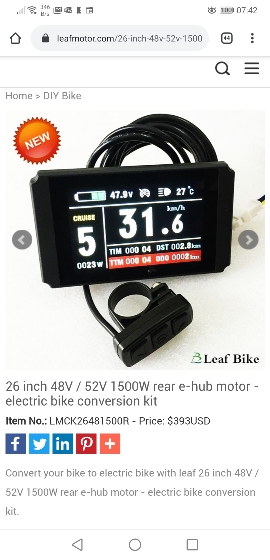ZeroEm
1 MW
by cheeko » May 11 2020 6:33am
Hi all you lovely people.
I'm thinking downgrading my Mxus 3k no issue it's great and quick but I want to ride more without only motor help so thought leaf 35mm with 5 or 6. Less hassle with frame and brakes.
Now what are people recommendations
Current battery:- 20S7P 105amp
26 inch wheels.
Futr Beta frame (Stealth P7)
What's max amps I can run motor at also what is best wind, I will first upgrade phase wires also anyone using 13/14G spokes I'd rather not drill out another rim to fit 12G.
The leafmotor from leafbikes Called "black magic" comes with 3mm phase wires, between 8-9 gauge awg
Get your temperature sensor working and have thermal rollback. Read this thread where they were dumping 80 amps into it.
There were others dumping high amps into it but do the reading. My controller is limited to 40 amps, BMS is limited to 60 amps "20S7P". Have it limited to 36 amps for battery life. The motor will have a long life at 2600 watts, Luke did a test on the motor and stated the motor runs at its best at 2000w. But people do dump 4-7 kw for short burst but it gets hot.
I do a lot of peddling and like the low drag but most of the time use pas to set how hard I work at what ever speed I am running at the time. Ordered a 7T so my top speed is 31 mph 26". Use the motor simulator adjust "Custom Kv (rpm/V)"to figure out the speed you want. My trike will pull less amps and have higher top speed on flat ground than an upright.
This is from my notes:
Unloaded kv
16 * 4T 650RPM 13.54
13 * 5T 550RPM 11.45 "Grinn's motor simulator has the 5T loaded at 10.53 kv"
11 * 6T 450RPM 09.37
09 * 7T 350RPM 07.29 "rpm V Loaded 6.33 Kv - 397.4 rpm"
08 * 8T 250RPM 05.208
07 * 9T 150RPM 03.125


